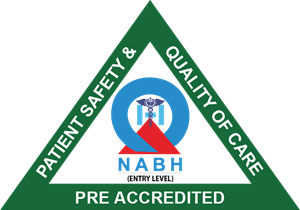- Home
- About
- Specialities
Centers of Excellence
- Facilities
- Procedures
Procedures
- Doctor List
- Health Packages
- Contact


At Bakson Multispecialty Hospital, Septoplasty is a surgical procedure done to straighten the bone and cartilage in the nasal septum. A crooked septum is common. But when it’s severe, a deviated septum can block one side of the nose and reduce airflow, causing difficulty breathing through one or both sides of the nose, affecting the quality of life.
As with any major surgery, septoplasty carries risks, such as bleeding, infection and an adverse reaction to the anesthetic. Other possible risks specific to septoplasty include:
One may need additional surgery to treat some of these complications. One may also need additional surgery if the outcome of septoplasty doesn’t match one’s expectations.
The procedure may be done with either local or general anesthesia. Which type of anesthesia is used depends on how complex the surgery is.
During surgery, the incision is closed with absorbable suture. Soft silicone splints may be inserted inside each nostril to support the septum. To prevent postoperative bleeding, our doctor may place bandage-like material in your nose (packing).
After surgery, the patient is moved to a recovery room, where the staff monitors and watches for any complications. This procedure is typically performed on an outpatient basis, so one is be able to go home the same day. One will need someone to drive them home.
To further decrease the chances of bleeding and swelling, our doctor may ask that the patient follow these precautions for several weeks after surgery. Depending on the extent of the surgery, one may not need to do all of these:
By three to six months after surgery, the nasal tissues will be relatively stable. It’s still possible that cartilage and tissue may gradually move or reshape over time. Some changes can still occur for up to a year or more after surgery.
Most people find that septoplasty improves their symptoms, such as difficulty breathing, that were caused by a deviated septum. The level of improvement one can expect with septoplasty varies by person.
Some patients find that their symptoms continue even after surgery and opt to undergo a second septoplasty to further refine the nose and septum.
| -- | -- |
Get to know our dedicated group of board certified doctors with exemplary qualifications, here to assist you on your healthcare journey.
These are stories that involves resilience, persistence & personal strength. Overcoming odds, difficulty and of course challenges of health, these stories ought to inspire us to look beyond the difficulties because there is always more to our lives than just challenges


You can choose to walk in to meet our doctors in their OPD or better still to book your appointment on line. You don’t need to wait. We have specialists in almost all fields of modern medicine.
We have rendered services in Homoeopathy for over 5 decades.
© copyright 2021 | All rights reserved